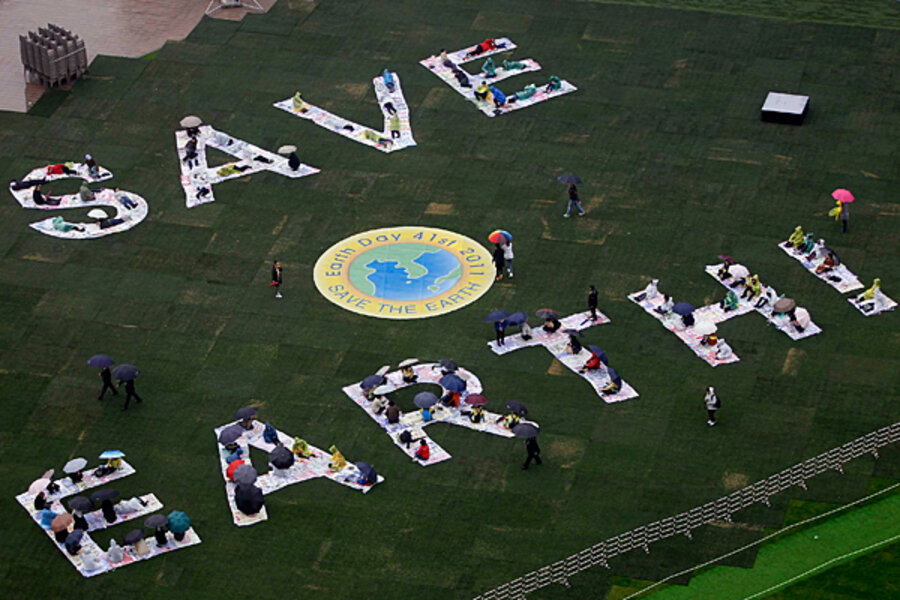Earth Day: How the antiwar movement inspired world's largest green campaign
Loading...
In the 1960s, student activists seemed more concerned with foreign conflicts such as the Vietnam War than with cleaning up the environment.
Then the largest oil spill in US history occurred off the coast of California, leaking an estimated 100,000 barrels of crude into waters near Santa Barbara in 1969 (it has since been eclipsed in size by Exxon Valdez and the BP Gulf spill). A US senator from Wisconsin visited the site and was so moved by the devastation that he proposed a "national teach-in on the environment."
From where could he find the organizers and participants for such an event?
Sen. Gaylord Nelson (D) of Wisconsin immediately looked to the student antiwar movement. He not only modeled his first-ever Earth Day in 1970 on the Vietnam War teach-ins of the time, but he also rallied those fervent protesters to join his environmental awareness campaign and make it a nationwide happening, according to the Earth Day Network website.
Senator Nelson, who had already helped pass the Wilderness Act in 1964 the Wild and Scenic Rivers Act in 1968, enlisted the support of Rep. Paul McCloskey (R) of California. Together the two men brought together some 20 million Republicans and Democrats, urbanites and rural-dwellers, to the first-ever Earth Day held April 22 in cities throughout the United States.
According to Earth Day Network, the event led to the creation of the US Environmental Protection Agency and the passage of the Clean Air, Clean Water, and Endangered Species Acts. The EPA itself, however, does not credit Earth Day for its creation and notes that President Richard Nixon had already declared his intention to establish the agency before the first Earth Day.
William Safire of The New York Times explained in a 1990 essay why the Nixon White House embraced it:
Why not? Conservation, as the organized love of nature was previously called, was a Teddy Roosevelt crusade, and besides, it was good to have the fierce energy of young, white, elitist demonstrators channeled into other than anti-war protests.
Earth Day went global in 1990 with an expanded campaign that galvanized 200 million people in 141 countries and spurred recycling programs worldwide. That event was credited with laying groundwork for the 1992 UN Earth Summit in Rio de Janeiro, Brazil, where collective action on climate change began. Global environmental summits have now become a staple of the international community's efforts to fight pollution and climate change.
The number of participating countries reached 184 in 2000. Today, that number is up to 192, and more than 1 billion people participate in Earth Day activities every year, coordinated by the Earth Day Network. It is supposedly the largest civic observance in the world.
Earth Day Network is encouraging people to celebrate Earth Day's 41st anniversary with a campaign called "A Billion Acts of Green," which calls for people to do small acts of sustainability – such as switching to compact fluorescent light bulbs or reducing the use of pesticides.


